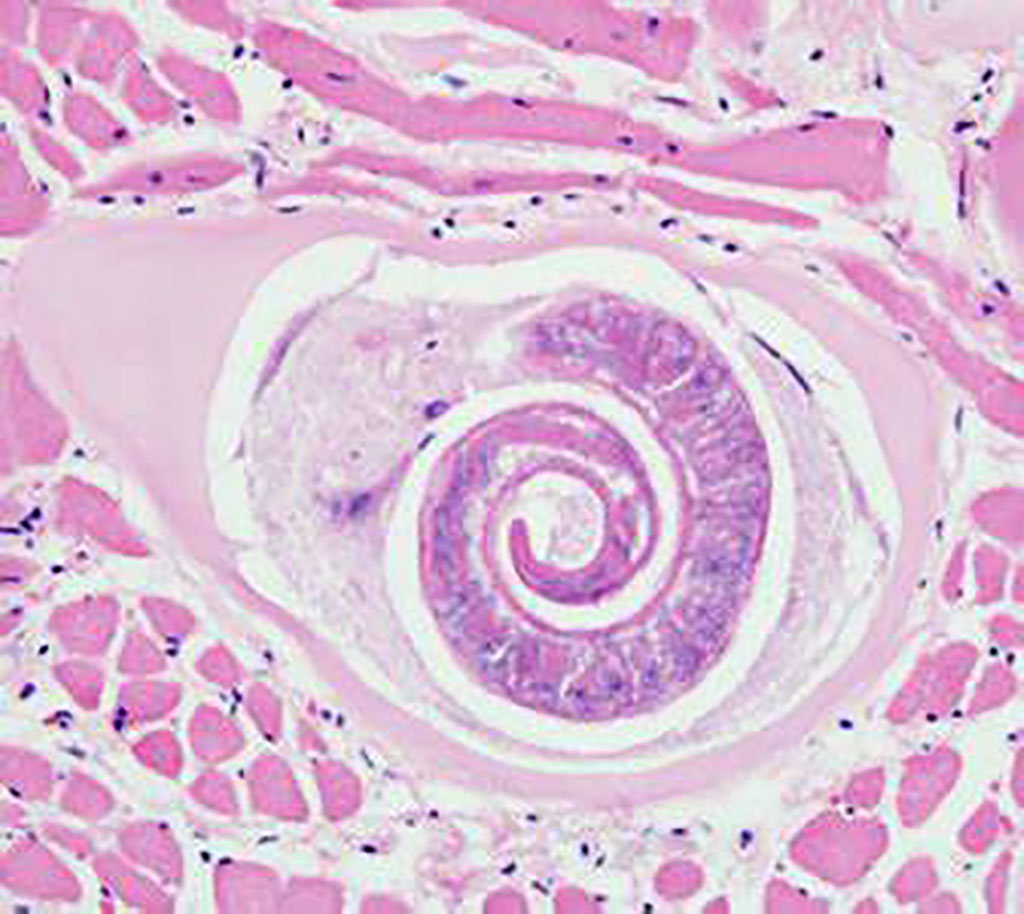Laboratory Features of Trichinellosis and Eosinophilia Threshold Determined
Posted on 01 Dec 2022
Trichinella nativa is a nematode worm, one of the species of the genus Trichinella, found in arctic and subarctic regions. It is highly pathogenic and has a high resistance to freezing. It is encapsulated, and infects a wide variety of mammals and birds.
T. nativa is a species commonly found in omnivores and carnivores such as wild boars, foxes, raccoon dogs and bears. In the Arctic, the corpses of animals that die may get frozen and later be consumed by scavengers. This worm remains viable even after being frozen at −18 °C for four years. Eosinophilia is a well-characterized feature of infection that is readily available for most cases.

Infectious Disease Scientists at the McGill University Health Centre (Montreal, QC, Canada) and their colleagues reviewed all requests for Trichinella serologic testing sent from Quebec to the National Reference Centre for Parasitology (Toronto, ON, Canada). They identified 43 cases of trichinellosis and a set of 31 region-matched controls. Information on signs and symptoms was available for only 19/43 case-patients, but demographic, laboratory, and clinical outcomes were well documented. Case-patients had a median age of 40 years and were mostly female (30/43, 69.8%).
Laboratory information was available for 41/43 case-patients. Features of Trichinella infection presumptively caused by T. nativa, are similar to those reported for T. spiralis infection, including elevated creatinine kinase and eosinophilia. The variable that differed most between cases and controls was peak absolute eosinophilia (5.35 versus 0.80 × 109 cells/L). Using ROC analysis, they identified an absolute eosinophilia threshold of >0.8 × 109 cells/L, which identified all cases in this series with a specificity of 71%.
The authors noted that automated flags and reflex testing in the local laboratory has now incorporated the threshold identified in their analysis. In the absence of a defined alternative diagnosis, eosinophil counts of >0.80 ×109 cells/L should prompt clinical consideration of trichinellosis and further investigation. The study was published in the November 2022 edition of the journal Emerging Infectious Diseases.
Related Links:
McGill University Health Centre
National Reference Centre for Parasitology














